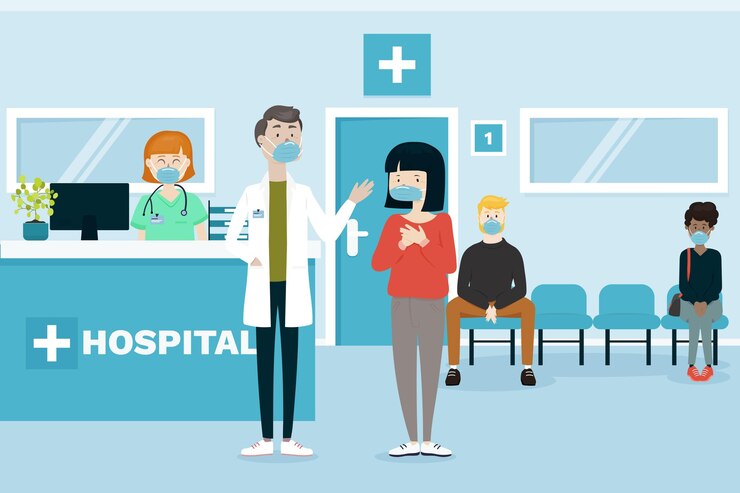
Nursing stations are the heartbeat of any hospital. These bustling hubs serve as the nerve center for patient care, communication, and coordination among healthcare professionals. From managing medical records to providing critical support during emergencies, nursing stations play a pivotal role in ensuring the smooth operation of healthcare facilities. Understanding the vital role of nursing stations in hospitals? This article delves into the multifaceted nature of nursing stations, exploring their functions, significance, and the evolving trends shaping their design and operation in modern hospitals.
Functions of Nursing Stations:
-
- Patient Monitoring: Nursing stations serve as central points for monitoring patient status, including vital signs, medication schedules, and treatment plans. Nurses stationed here keep a watchful eye on patients’ conditions and respond promptly to any changes or emergencies.
- Communication Hub: Effective communication is essential in healthcare settings, and nursing stations facilitate seamless interaction among healthcare professionals, patients, and their families. Nurses relay important information, coordinate care plans, and liaise with other departments to ensure comprehensive patient management.
- Documentation and Record-Keeping: Nursing stations are responsible for maintaining accurate and up-to-date patient records, including medical histories, test results, and treatment logs. This documentation is vital for continuity of care, regulatory compliance, and quality assurance.
- Resource Allocation: Nurses at the station manage resources such as medical supplies, equipment, and staffing assignments. They ensure that necessary supplies are readily available, equipment is in working order, and staffing levels are adequate to meet patient needs.
- Emergency Response: In emergencies, nursing stations serve as command centers for coordinating rapid responses. Nurses mobilize resources, summon additional assistance, and provide immediate care until specialized teams arrive.
Significance of Nursing Stations:
-
- Patient Safety and Care Quality: Nursing stations are instrumental in safeguarding patient safety and delivering high-quality care. By closely monitoring patients, promptly addressing their needs, and maintaining meticulous records, nurses contribute to positive health outcomes and patient satisfaction.
- Efficiency and Workflow Optimization: Nursing stations streamline workflow and enhance operational efficiency within hospitals. By centralizing essential functions and fostering communication and collaboration among healthcare teams, they reduce redundancy, minimize errors, and maximize productivity.
- Patient and Family Engagement: Nursing stations serve as points of contact for patients and their families, providing information, support, and reassurance. Nurses offer guidance on treatment plans, address concerns, and facilitate communication with physicians, fostering a sense of trust and engagement among stakeholders.
- Professional Development and Collaboration: Nursing stations foster professional growth and collaboration among nurses and other healthcare professionals. By working closely together in a dynamic environment, nurses share knowledge, skills, and best practices, enriching their expertise and enhancing the quality of care they provide.
Evolving Trends in Nursing Station Design and Operation:
-
- Technological Integration: Advances in technology are reshaping nursing station design and operation. Electronic health records (EHRs), telemedicine platforms, and mobile communication devices are increasingly integrated into nursing workflows, enhancing the efficiency, accuracy, and accessibility of information.
- Patient-Centered Care: Modern nursing stations are designed with a focus on patient-centered care, featuring open layouts, comfortable seating areas, and amenities to enhance the patient experience. These designs promote interaction between patients and caregivers, fostering a supportive and healing environment.
- Flexibility and Adaptability: Nursing stations are becoming more flexible and adaptable to accommodate evolving healthcare needs and practices. Modular furniture, movable partitions, and wireless technology enable quick reconfiguration of spaces to optimize workflow and accommodate changing patient volumes and acuities.
- Remote Monitoring and Telehealth: With the rise of telehealth and remote monitoring technologies, nursing stations are extending their reach beyond hospital walls. Nurses can monitor patients remotely, provide virtual consultations, and coordinate follow-up care, expanding access to healthcare services and improving continuity of care.
Conclusion:
At Penta Surgicals, nursing stations are the lifeline of hospitals, serving as vital hubs for patient care, communication, and collaboration among healthcare professionals. Their multifunctional role encompasses patient monitoring, communication, documentation, resource management, and emergency response. As healthcare continues to evolve, nursing stations will adapt to embrace technological advancements, patient-centered principles, and flexible design concepts, ensuring they remain effective and efficient in supporting the delivery of high-quality care.





